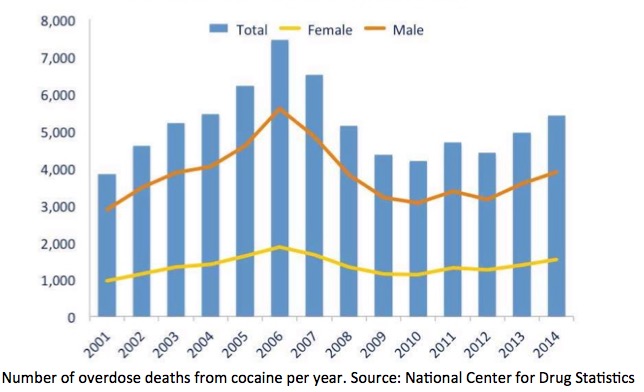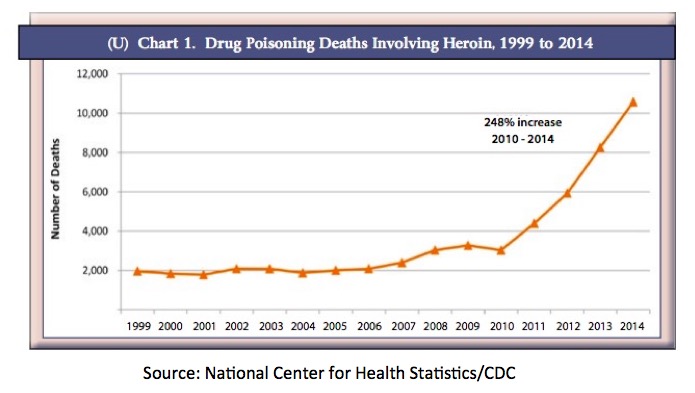
Some people reach the pinnacle of their careers through some combination of brain power, wisdom, sound judgment, and the ability to logically cope with unforeseen events.
Then there is Tom Frieden, who mercifully just stepped down as the head of the Centers for Disease Control and Prevention (CDC). Perhaps "fell down" would be a more apt term, since his tenure there was not terribly different than a 7-year long Three Stooges marathon — one embarrassment after another.
Scratch that. The Stooges were funny; their famous poke in the eye routine still amuses us after many years. Frieden poked America in the eye too, but there was nothing even remotely amusing about it. In fact, thanks to his agency, many Americans are suffering from pain far worse than a poke in the eye.
Frieden, who was named by President Obama in 2009, was formerly the Commissioner of Health for New York, where he did a pretty good job (1). But the term "pretty good" is even funnier than The Stooges when describing Freiden's performance at the CDC. Let's just go with "atrocious" for now. Or another word, which starts with "cluster."
Frieden's claim to "fame" came in 2014, and it came fast and furious. His bumbling of Ebola outbreak was the stuff of legends. Perhaps the following photo, which I used in my October 2014 Science 2.0 piece, (see: Preventing Ebola: Screen — Or Screen Door) is a bit unkind, but not necessarily inaccurate.

Shoeless Joe- Big Hits Clueless Tom- Dim Wits
But, Frieden's problems started before Ebola. His agency picked up the rather annoying habit of throwing deadly germs around. Shoeless Joe (2) may have had a better arm, but Clueless Tom had the spitball, and the spit was full of germs.
In early June, 86 CDC workers in Atlanta were exposed to anthrax. Ironically, they were looking for a way to kill the bug with chemicals, but instead of letting the procedure go for 48 hours, they stopped after 24.
"What a diff'rence a day made.
Twenty-four little hours."Dinah Washington, 1959
Not only was the anthrax alive, but it was sent to labs that were not equipped to deal with it because of the lack of proper containment capability.
“We know that was a mistake, What else, I don't know.”
Agency spokesman Tom Skinner. June 2014
"Duh"
Josh Bloom. January 2017
Matters hardly improved days later, when CDC researchers, studying a mild strain of influenza, contaminated it with the much more dangerous H5N1 bird flu strain, which had killed almost 400 people during the previous ten years. But if June was bad, it was July when the fireworks really went off, but they didn't wait until the 4th.
On July 1st NIH employees stumbled across a box that contained a minor inconvenience, which had been sitting in an unsecured storage refrigerator for 40 years—smallpox. Which may have been alive. (See: Smallpox In A Big Box With No Locks)
“It’s possible, but we don’t know for sure if the smallpox virus in these samples will still be able to grow in laboratory,”
Steve Monroe, head of the CDC’s division of high consequence pathogen. June 2014
Let's cut them a break. Anyone can mishandle three different deadly pathogens over the course of a few weeks. But the agency failed to inform Congress of the smallpox incident. Congress was not pleased, as is evidenced by the statement from Rep. Fred Upton (R-MI)
"And just when we thought the situation could not get any more distressing, it does...We're not talking one or two incidents, but 139 discoveries of select agents in unregistered locations... Someone is going to get hurt."
Rep. Fred Upton (R-MI). July 2014
Apparently the expression "quit while you're behind" was not well-defined in CDC employee handbook. Not content with having botched the handling of anthrax, bird flu, and smallpox, the agency continued its historic march off the microbiological cliff to hell when Ebola came to town that fall. This one was a real mess.
When Ebola sent the world into a panic, the CDC formulated one seriously stupid plan to prevent the virus from spreading to the U.S.— take the temperature of people from epidemic areas as they entered the U.S. through five major airports: JFK, Newark, Washington Dulles, Chicago and Atlanta.This was ridiculous on many levels. Here's why:
- An asymptomatic, but an infected person will have a fever for about one day of the 21-day incubation period during which the virus can spread (before symptoms begin). Taking an Advil will mask the fever. The chances of actually detecting an infected passenger using this method are about zero.
- If a fever is detected, the odds that it is a result of Ebola are less than zero. Fevers can be caused by all kinds of infections that are gazillions of times more common than Ebola:
- Norovirus (650 million cases per year worldwide). And it causes severe vomiting, just like Ebola.
- Colds (far more cases than norovirus)
- Influenza (3-5 million cases per year)
- Malaria (212 million cases per year) (3)
"We believe these new measures will further protect the health of Americans..."
CDC Director Tom Frieden. October, 2014
This worked out about as well as expected. Over a two-month period, 36,000 people from Western Africa with fevers were detained. The number of Ebola cases? Zero. Yet, Thomas Duncan, a visiting Liberian, who became the first documented case in the U.S. made his way to Dallas in September, where he became ill. Duncan was sent home with Tylenol from the Texas Health Presbyterian Hospital emergency room on September 25th, only to return four days later severely ill, at which point he was diagnosed with Ebola. Duncan died on October 8th, but not before infecting two nurses at the hospital. Nice.
But, in the minds of many, the most pain that Frieden will have left behind is pain itself.
This is because Frieden was the point man in the most recent battle in the never-ending (and unwinnable) war on drugs. How's that war working out so far? Not so well for cocaine.

How about crystal meth? Well, the DEA is seizing an awful lot of it:
But that hasn't stopped people from using it. The amount consumed quadrupled between 2000-2005 and doubled between 2000-2010. (Source: National Institute on Drug Abuse)

But the current war is fundamentally different from the others because it involves opioid drugs—legitimate medicines that many people need. The battle plan for opioids was to shut off the spigot of pain drugs, mostly hydrocodone and oxycodone, at the pharmacy, under the assumption that this would prevent patients from becoming addicted and addicts from dying. This plan, which began in the early 2000s, culminated with the issuance in 2016 of the CDC Guideline for Prescribing Opioids for Chronic Pain. It has been an utter disaster for both addicts and pain patients.
As pills became scarce and expensive (4), addicts moved on to much cheaper and more available heroin, which was made far deadlier by the addition of fentanyl. When statistics are available from individual states, they look pretty much the same. Here are Florida and Ohio. Note that in Florida that the "crackdown" had little impact even on the pills, but it sure did on heroin/fentanyl death. They rose eight-fold between 2011 and 2015. In Ohio, the state with the most heroin fatalities in the country, the magnitude was nearly identical between 2008 and 2012.

It should come as no surprise that the picture nationwide mirrors that of these states.

But the worst aspect of turning off the supply of pain pills is difficult to quantitate, but easy to read about almost every day—suffering. People—even those who had been treated responsibly with opioids for many years— found that the same doctors who had been treating them would no longer do so. Pain clinics began to close. The result? it is not uncommon for people who are living in severe pain and unable to get legal prescriptions to resort to street heroin (5). Veterans, with limited access to addiction treatment programs, have been cut off from drugs that some have been taking for 15 years, and have being told to try acupuncture, Tai Chi, and Qi Gong instead. Or being put on medications that were never designed to treat pain in the first place (and have their own liabilities). This has taken a huge collective toll on the country. News stories about people committing suicide to end their misery are increasingly easy to find. (See: Merciless In Seattle: Untreated Pain, Misery, And Suicide.
Good luck trying to get an opioid drug from your doctor. With the DEA looking over their shoulders, they fear losing their licenses, which can force them to violate the Hippocratic oath. Just what we don't need—another barrier between people and their physicians.
And for what? Although data vary widely, several reviews, including the evidence-based systematic Cochrane Review of 26 studies, and a 38-study review in the journal Pain, concluded that the number of people who use opioids legally and responsibly for pain control seldom become addicted (approximately 10 percent). The overwhelming majority of addicts become so from recreational use of these drugs. The CDC is "solving" the wrong problem.
So, it's been a blast, Tom. Don't let the Ebola screen door hit you on the way out because it might hurt. Not to worry, though. Perhaps cupping or meditation will help you with that.
Notes:
(1) Frieden was credited for the ban on smoking in New York City restaurants, something for which millions of us thank him.
(2) Joseph Jefferson (Shoeless Joe) Jackson is considered by some to be the greatest baseball player in the history of the game. Unfortunately, he got caught up in the 1919 Chicago Black Sox scandal, where members of the team conspired to throw the World Series for money. Despite the fact that Jackson had an excellent series (.375 batting average, 12 hits and 6 runs batted in) he was banned from baseball for life in 1920.
(3) Malaria is endemic in Africa. Malaria causes fever—all 212 million cases. And the CDC was going to keep Ebola out of the country using thermometers?
(4) Note that in every graph of heroin use or deaths; there is a sharp inflection point beginning in the year 2010. This is a result of OxyContin—the primary driver of opioid addiction—being reformulated to make it harder to abuse. Addicts gave up and switched to heroin instead.
(5) Seriously???? People in pain who get cut off from their meds having to score heroin on the street? Could this possibly be a bigger mess?


